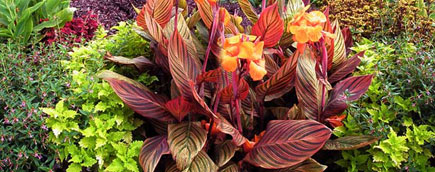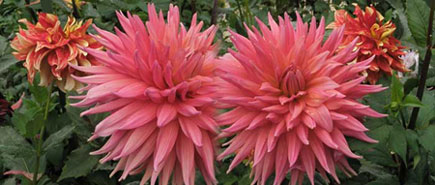The Olympus Stylus 820: Panorama Power
Panoramics can be a fun way to depict locations. They broaden peripheral
vision while not sacrificing image information or getting distortion
that would result from cropping a shot made with a super-wide lens.
As someone who travels a bit I have taken to making pictures out
of hotel room windows. This rare vista (rather than a parking lot
or some brick wall) was made with the Stylus 820 from a New York
City hotel located on 44th St just off Broadway. All Photos © George Schaub, All RIghts Reserved |
The Panoramic features are accessed via the Menu button on the back of the camera. Toggle through to Panorama and you are presented with three options: Combine in Camera 1; Combine in Camera 2; and Combine in PC. The first option guides you through making vertical or horizontal panorama pictures via a clever "match the mark with the pointer" scheme. Once you choose this option you assay the scene and pick a start point for the three shots to follow. Once you make the first shot you then move the camera in the direction of the next shot. Once motion in a certain direction begins the camera pops a target into the finder. You move a point that originates from the first scene until it hits the target, and then the shutter clicks by itself! You do the same for the third shot. In essence, the camera releases the shutter for you once you match the point inside the target. After exposure the image starts processing right before your eyes, with each shot scrolled and then stitched and then finally all joined for your inspection in playback.
 |
|
|
This is quite addictive, and makes short work of doing panoramas of any scene you come upon. If you only want a two shot panorama you can push the OK button on the back of the camera to cut it short,. Another note is that any white balance setting, zoom setting and exposure settings do not change throughout the sequence, which is fitting and good practice in whatever fashion and with whatever setup you shoot panoramas. The exposure and other settings are made by the exposure and WB system, with no input from you. And all the pictures in this option are saved only as a stitch and not as individual exposures.
 |
|
|
The Combine in Camera 2 option is where you determine, with help from edge guides, when you want to have the images stitched. This is similar to Combine 1 in most functions except you snap the shutter yourself rather than have the camera do it for you. You can also make your own ISO and other settings in this mode, which overrides the fully auto settings you get in Combine 1. Again, only a stitched version is saved, and you are limited to three shots in the merged set. But you can also stop at two by pressing the OK button after the second exposure.

|
|
Combine in PC, the third option, is where you can stitch up to 10 images at a time. You compose with guides in the finder to help align the images, then open them in the supplied Olympus Master Software and do your magic there. This option is most like other stitch functions on cameras we have tried, and really does not need the 820 to accomplish. But the Combine 1 and Combine 2 options were clever enough to catch our eye, and really do make panoramas very easy and fun. Like I said, once you try Combine 1 out and see how easy well stitched panoramas can be you might just get as hooked as I was making them.
 |
|
|
On other counts the Olympus Stylus 820 (about $249 street price) is a highly portable and well designed digicam that would make an excellent traveling companion for those who like making snaps as they go, albeit with the usual shutter lag and LCD-only finder that is a tough read in bright light. But that panoramic option of Combine 1 is probably the easiest and most fun way of making stitched prints that I have ever tried.
- Log in or register to post comments












































